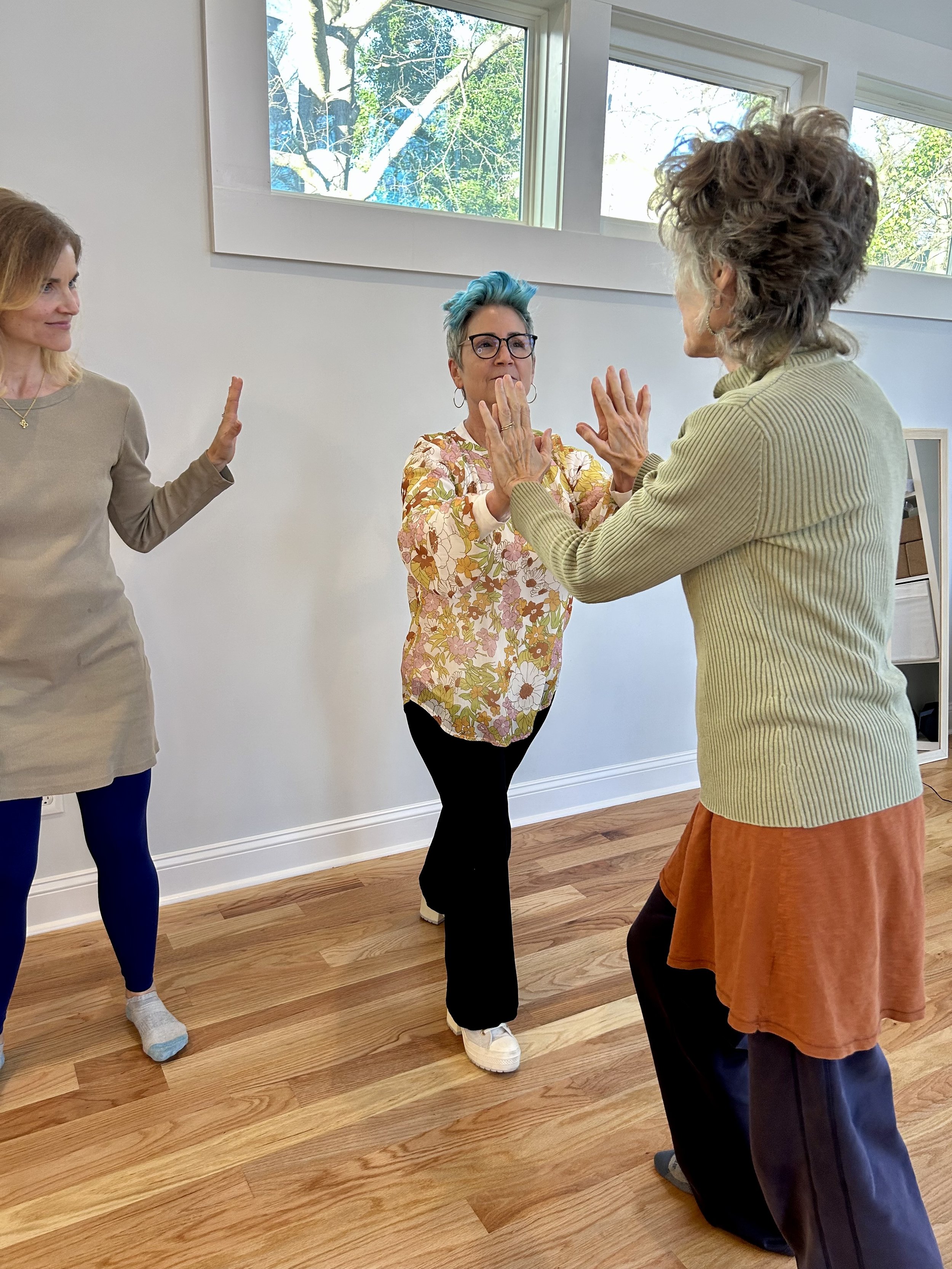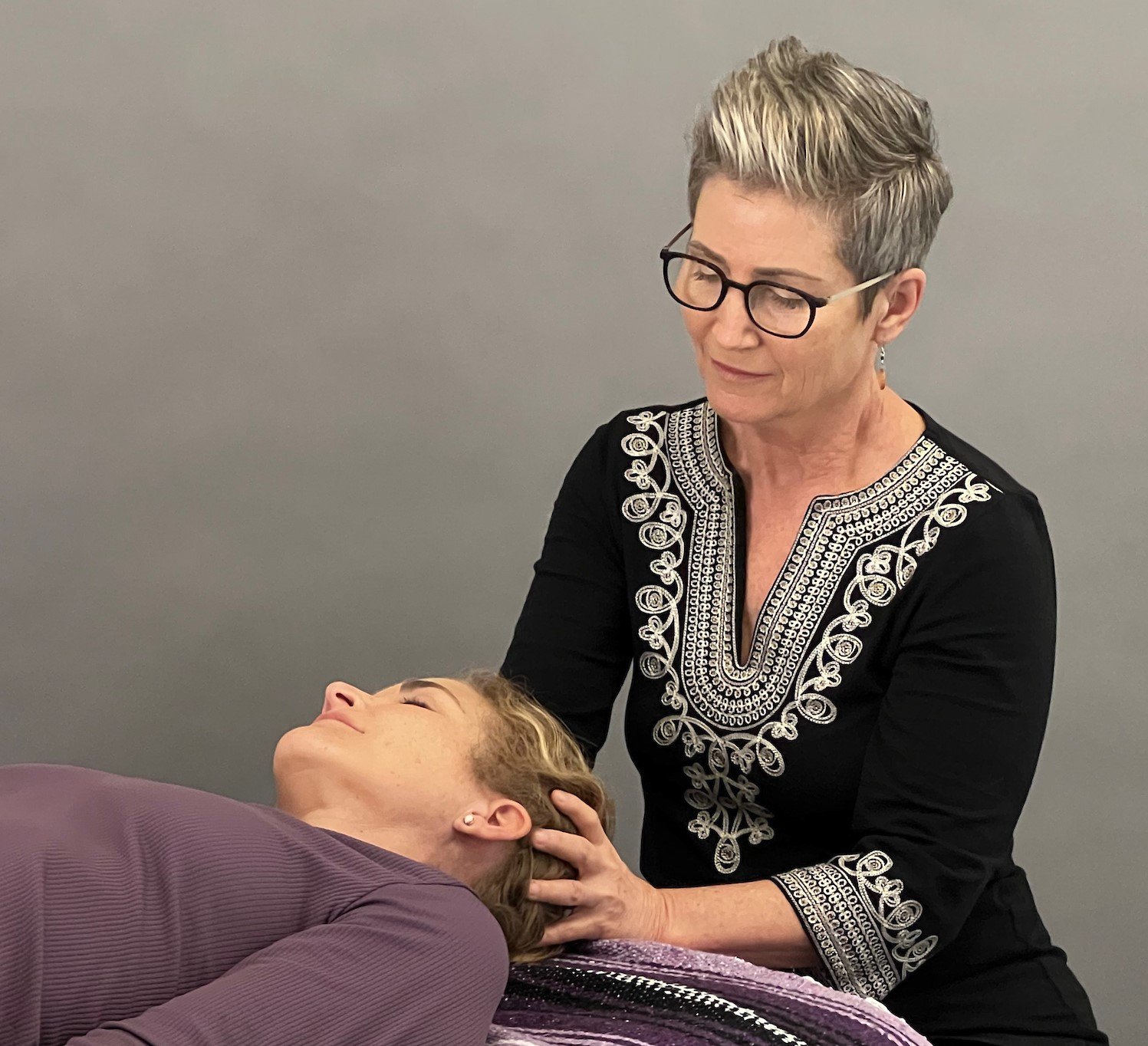
The Story of Chi for Two®
The development of Chi for Two® - a mindful embodiment method has six inspiring chapters:
Chapter One: Trauma
Dee and Stephen are on the left in this concert promo.
Like most therapists, Dee Wagner—originator of Chi for Two—had a rich personal therapeutic journey. This journey led Dee to want to become a therapist. Sharing personal discoveries of strength and hope in the service of others’ healing creates awareness of the deep richness gained when we find the path to well-being.
When Dee was born, her father had his first psychotic episode. This meant that these “crazy” feelings were brewing in the family as Dee was forming in the womb.
Chapter Two: Relationship Dancing
Photo ©2012 N Gebhardt
Dee taught ballroom dance for many years. When Caroline got pregnant, Dee and Caroline began exploring how the dance between infant and parent is similar but different from romantic dances.
Touch is lovely in romantic dances, but essential with infant/parent.
The energetic dance of Call and Response is fun with lovers, but between parent and child it is an invitation to embodiment .
Feeling known by your lover is sweet, but as children, we are hungry to be witnessed—to call out, “Watch this!” or “Listen to this!”
Chapter Three: The Practice of Push
Photo ©2021 J Cargile
In the late 90’s, Dee was working with a couple who argued frequently. Suddenly, Dee said, “You know, nothing you two are talking about seems important. I think you just need to wrestle.”
Dee invited the couple to face one another and press their palms together. They pushed and laughed. They did some alternate-handed push moves and laughed more. They stopped and rested, looking at Dee as if to say, “We have stumbled on a useful truth.” They learned to catch themselves verbally wrestling at home, and to switch to this palm-to-palm wrestling and see what happened. It helped.
Chapter Four: Polyvagal Theory
Dee discovered scientist Stephen Porges’ Polyvagal Theory of nervous system functioning. Polyvagal Theory helps us identify an active state that is not fueled by Fight/Flight. Porges calls this state Play/Dance.
As a massage therapist, Mary Lou began picturing how to bring this important information to bodyworkers. She began to recognize how polyvagal theory could help bridge the work of psychotherapists and bodyworkers, brainstorming with Dee about possibilities.
Chapter Five: Online Dating Dances
Photo ©2021 J Cargile
Dee met John Cargile—now Dee’s husband. John is a long-time yoga enthusiast and Dee and John did a lot of yoga classes side by side.
Because they met online, they teamed up with Kathy Jernigan to write a workbook that helps online daters use the experience of romantic dating dances to shift the way they live in their bodies: Naked Online: A DoZen Ways to Grow from Internet Dating.
Chapter Six: Chi for Two Embodiment Coach Training Program
Photo ©2021 J Cargile
Back when Stephen was 5, Dee wrote a children’s book called Mabry. Recently Stephen and Dee recognized how this children’s book foreshadowed the first Chi for Two practice—Star.
Mindful movement became Stephen’s profession. He has taught yoga, meditation and martial arts off and on over many years. It was when he became a tai chi teacher, that Dee approached him and invited him to develop Chi for Two with her.
illustration by J Cargile
This is the story of the creation and development of Chi for Two® - a mindful embodiment method. As you read this story, you are joining us.
We hope you will explore some of the relational practices by doing a coaching session or consider exploring our embodiment coach training.
Perhaps you’d like to become a certified Chi for Two embodiment coach. As we say in our training programs, “Let’s push into each other and develop our Social Engagement systems.”
Learn a little more about how Chi for Two helps us embody polyvagal theory at Polyvagal 101.









